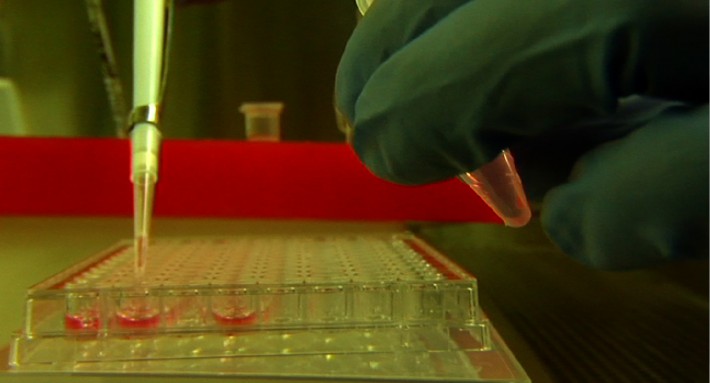Visualising Scientific Experiments
JoVE, the Journal of Visualized Experiments, was established in October 2006 as the first online journal devoted to video-publication of biological and biomedical research with the aim of improving the productivity of biomedical research. In July 2013 JoVE published its 2500th video article. Dr Moshe Pritsker, co-founder and CEO of JoVE, provides an overview.
N.B. This article first appeared in Viewfinder 75.
 About the Author: Dr. Pritsker developed the JoVE idea based on his deep familiarity with current problems in biological research, acquired through more than 10 years of work in this area. He holds a Ph.D. in Molecular Biology from Princeton University and an M.Sc. in Chemistry from the Weizmann Institute of Science. Results of his research on stem cells, genomics, bioinformatics and HIV have been published in leading scientific journals (PNAS, JBC, Genome Research and Biochemistry) as well as in patent applications. Prior to co-founding JoVE, Dr. Pritsker held the position of post-doctoral researcher at Harvard Medical School/Massachusetts General Hospital.
About the Author: Dr. Pritsker developed the JoVE idea based on his deep familiarity with current problems in biological research, acquired through more than 10 years of work in this area. He holds a Ph.D. in Molecular Biology from Princeton University and an M.Sc. in Chemistry from the Weizmann Institute of Science. Results of his research on stem cells, genomics, bioinformatics and HIV have been published in leading scientific journals (PNAS, JBC, Genome Research and Biochemistry) as well as in patent applications. Prior to co-founding JoVE, Dr. Pritsker held the position of post-doctoral researcher at Harvard Medical School/Massachusetts General Hospital.
Every practising researcher in biology and medicine is familiar with the following paradox: though groundbreaking scientific findings may be published in reputable journals, these publications rarely contain enough information to reproduce experiments described. Although science is supposed to be reproducible, researchers attempting to repeat experiments based on their description scientific journals often fail. Therefore, more than 50% of the time in biomedical research is taken by repetitive attempts to establish and employ experimental techniques and procedures already described in the scientific literature. This has become a never-ending process for scientists as technologies in this fast-growing field undergo significant changes every few years. Currently, the time and resource consuming process of training and re-training techniques and procedures represents a critical ‘bottleneck’ problem of biomedical research and drug discovery.
… this novel video-based approach to scientific publishing reflects the reality in scientific laboratories
To address this widespread problem, the Journal of Visualized Experiments (JoVE, www.jove.com) was established in October 2006 as the first online journal devoted to video-publication of biological and biomedical research. It publishes video-articles, which are step-by-step video demonstrations of experimental procedures. This novel video-based approach to scientific publishing reflects the reality in scientific laboratories where researchers typically learn new procedures, or protocols, through direct visual demonstration from another researcher. Given the narrow specialization of the current research, it is highly implausible to have an expert consistently available to give detailed on-demand instructions on how to perform a specific experiment. Therefore, the JoVE ’s approach brings this ‘show-me’ solution to the new systematic level, making transfer of scientific knowledge fast and efficient.
Examples of the magazine’s video-articles include ‘Calcium Imaging of Cortical Neurons using Fura-2 AM’ produced in the laboratory of Ricardo Dolmetsch at Stanford University. This article describes one of the most fundamental approaches in neuroscience – measuring calcium flux in cultured brain cells. Derivation of human embryonic stem cells is described by the Harvard group of professor Doug Melton, one the leading experts in the stem cell biology today. Another video-article, ‘Microfluidic Chips Controlled with Elastomeric Microvalve Arrays’ from the Albert Folch’s lab at University of Washington, demonstrates the fabrication of a bioengineering device used for controlled mixing of drug compounds. The structure of the video-articles is similar to the traditional scientific articles, including an Abstract, Introduction, Experiment and Discussion. These video-articles are supplemented by text descriptions of each experimental technique.

 Learning on Screen
Learning on Screen